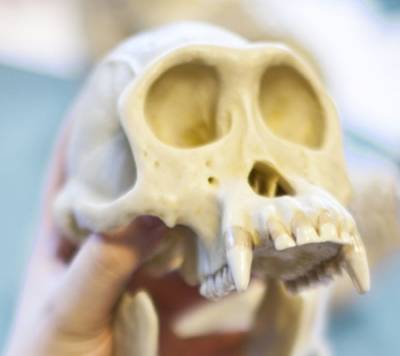New sediment analysis from the land of Sahelanthropus tchadensis
18 March 2016
This study presents mineralogical and geochemical data from a borehole drilled near the locality of Bol (13°27′N, 14°44′E), in the eastern archipelago of the modern Lake Chad (Chad).
 Samples were taken from a ∼200 m long core section forming a unique sub-continuous record for Central Africa. Among these samples, 25 are dated between 6.4 and 2.4 Ma. Dominant minerals are clays (66% average) mixed with varying amounts of silt and diatomite. The clay fraction consists of Fe-beidellite (87% average), kaolinite, and traces of illite. Clay minerals originate from the erosion of the vertisols that surrounded the paleolake Chad. Sedimentological data indicate that a permanent lake (or recurrent lakes) existed from 6.7 until 2.4 Ma in the vicinity of Bol. By comparison with modern latitudinal distribution of vertisols in Africa the climate was Sudanian-like. Changes in the sedimentation rate suggest a succession of wetter and dryer periods during at least six million years in the region during the critical time period covering the Miocene-Pliocene transition.
Samples were taken from a ∼200 m long core section forming a unique sub-continuous record for Central Africa. Among these samples, 25 are dated between 6.4 and 2.4 Ma. Dominant minerals are clays (66% average) mixed with varying amounts of silt and diatomite. The clay fraction consists of Fe-beidellite (87% average), kaolinite, and traces of illite. Clay minerals originate from the erosion of the vertisols that surrounded the paleolake Chad. Sedimentological data indicate that a permanent lake (or recurrent lakes) existed from 6.7 until 2.4 Ma in the vicinity of Bol. By comparison with modern latitudinal distribution of vertisols in Africa the climate was Sudanian-like. Changes in the sedimentation rate suggest a succession of wetter and dryer periods during at least six million years in the region during the critical time period covering the Miocene-Pliocene transition.Lake Chad sedimentation and environments during the late Miocene and Pliocene: New evidence from mineralogy and chemistry of the Bol core sediments
Abderamane Moussa, Alice Novello, Anne-Elizabeth Lebatard, Alain Decarreau, Claude Fontaine, Doris Barboni, Florence Sylvestre, Didier L. Bourles, Christine Pailles, Guillaume Buchet, Phillippe Duringer, Jean-Francois, Gheinne, Jean Maley, Jean-Charles Mazur, Claude Roquin, Mathieu Schuster, Patrick Vignaud, Michel Brunet
DOI:10.1016/j.jafrearsci.2016.02.023
 Close
Close




